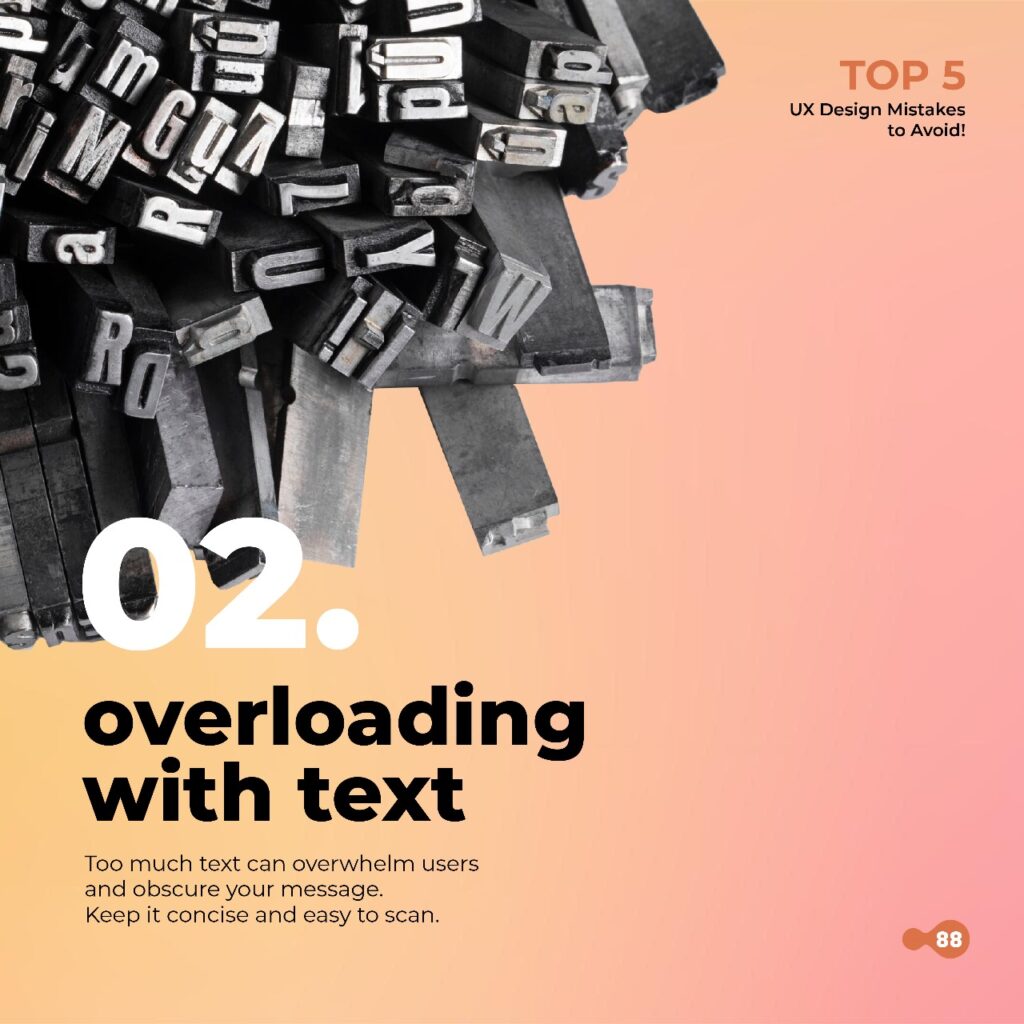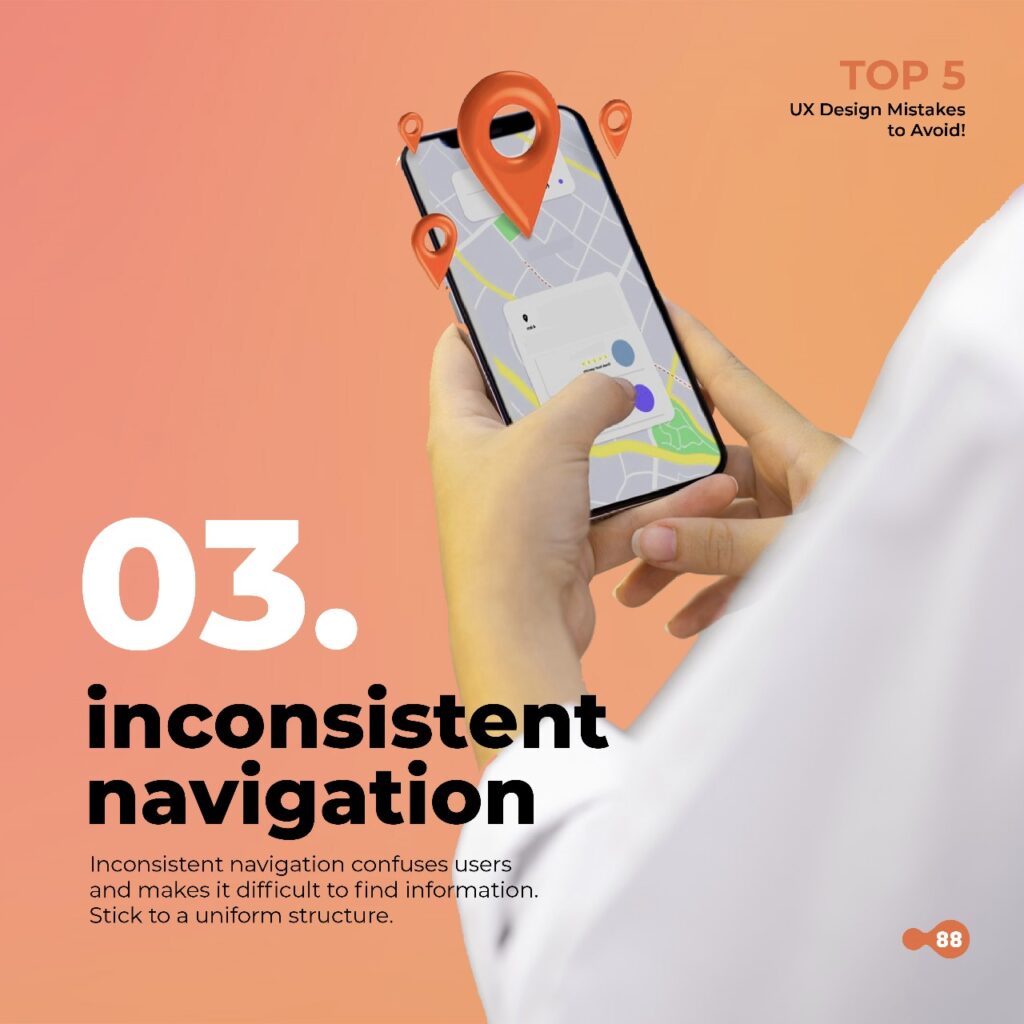User experience (UX) design plays a critical role in how people interact with a website or app, affecting how long they stay, what actions they take, and ultimately, how they perceive your brand. Even small missteps in UX design can lead to frustration, higher bounce rates, and fewer conversions. Here, we highlight five common UX design mistakes and offer actionable tips to avoid them, helping you create an intuitive and enjoyable experience for your users.

1. Ignoring Mobile Users
With over half of internet users browsing on mobile devices, optimizing for mobile is essential. A responsive design that adapts to various screen sizes and resolutions is key to ensuring your website is accessible on any device. Ignoring mobile users can lead to distorted layouts, illegible text, and unclickable buttons, making it difficult for users to navigate.
Solution: Design mobile-first. This approach focuses on creating an optimal experience for smaller screens before adapting to larger ones. Test extensively across devices and orientations to ensure consistency and usability for all users.

2. Overloading with Text
Content is valuable, but overloading your pages with text can overwhelm users and detract from visual appeal. Large blocks of text are hard to scan and can deter users from reading key information. In UX design, clarity is everything—so be concise.
Solution: Break down information into digestible sections. Use bullet points, short paragraphs, and headlines to make content scannable. Add visuals, such as icons and images, to support text and guide users’ eyes toward important information.

3. Inconsistent Navigation
A website’s navigation should be intuitive, guiding users easily to the pages they need without confusion. When navigation menus, links, or buttons are inconsistent across pages, it disrupts users’ journeys and can frustrate them.
Solution: Create a consistent navigation structure with clear labels and organized paths. For example, a hamburger menu on mobile and a top bar on desktop can work well when applied consistently. Aim for simplicity—users should know where they are on the website and be able to return to any page with ease.

4. Neglecting Accessibility
Accessible design ensures that everyone, including people with disabilities, can use your website. Neglecting accessibility limits your audience, leaving potential users behind and possibly infringing on accessibility regulations. Design elements like readable fonts, color contrast, and keyboard navigation are critical.
Solution: Implement accessibility best practices, such as adding alt text for images, designing for color contrast, and ensuring that all functions are accessible by keyboard. Consider using tools to audit your site’s accessibility and make adjustments to accommodate all users.

5. Slow Load Times
A slow website frustrates users and can even damage your SEO rankings. Every additional second of load time risks losing users who are unwilling to wait. Users today expect pages to load almost instantly, and when they don’t, it directly impacts conversions and user satisfaction.
Solution: Optimize your website’s speed by compressing images, minimizing CSS and JavaScript files, and leveraging caching. Regularly test your site’s load time to identify and address any issues that slow it down.
By avoiding these common UX mistakes, you can create a website that’s more enjoyable, accessible, and user-friendly. Your users will appreciate a smooth experience that feels intuitive and rewarding, helping build trust and increase engagement.
Want to take your UX to the next level? Contact us for a free consultation, and let’s work together to create a flawless user experience for your brand!
#UXDesign #88medias #WebDesign #UserExperience #DigitalSolutions

